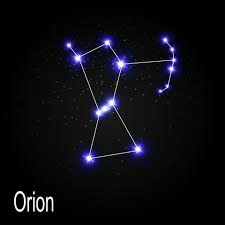Hello everyone,
have someone already checked out the new GPS from Ardusimple with triple Band L1L2L5? It is double the price, but it it worth to give it a try?
Regards, Peter
Hello everyone,
have someone already checked out the new GPS from Ardusimple with triple Band L1L2L5? It is double the price, but it it worth to give it a try?
Regards, Peter
Talking about it with Andreas some days ago :
Andreas Ortner, [15.10.21 09:25]
Better invest some euro in dual
Andreas Ortner, [15.10.21 09:27]
Receiver is super accurate
Andreas Ortner, [15.10.21 09:27]
Best use for survey
Andreas Ortner, [15.10.21 09:30]
Put a ultra accurate l3 gnns on tractor is like shooting with tanks on birds …
Vili, [15.10.21 09:31]
![]()
Daniël P, [15.10.21 11:14]
[In reply to Vili]
100hz rtk ![]()
Andreas Ortner, [15.10.21 11:26]
just fun for agio
Andreas Ortner, [15.10.21 09:30]
Put a ultra accurate l3 gnns on tractor is like shooting with tanks on birds …

This sounds appropriate for the birds in my area.
But seriously a repeatable couple of inches is fine, cm accuracy is perfect, mm very cool but just bragging at that point. Unless you are willing to spend some extreme time tuning your steering, and have next to no play you will not be able to take advantage of it.
Actually after reading the specs 7mm up to 35km baseline, its no better than an f9p.
That’s my thinking; MM accuracy is overkill, even a 5CM drift is barely noticeable on a large vehicle.
Maybee the questions was: " is the higher rate frequency bringing something better ?" the dual GPS solution is maybee an out of the box solution for the person that wants that!
10hz gives you a measurement every 28cm at 10km/h. 20hz would be 14cm. Extra resolution never hurts, but would it actually be noticeable?
Then its attainable steer accuracy vs position accuracy.
Another experiment would be rover Hz increase vs Base correction Hz increase for accuracy gains. 10hz corrections seem to be popular in earth moving.
Hopefully the OP tests them out. But if you read the specs lower down, its very much similar to F9P.
Isn’t the L2P code support important, finally dual frequency GPS with all GPS satellites?
All commercial (agri) receivers have supported all the same codes for a long time, like L5. Hardly been there just to increase the receiver price.
The accuracy isn’t actually mm-level but sub-cm, of the order of one half of the old product? As such probably not a game changer.
Yes L2 is important, Dual Band L1C/L2 is a correction in itself comparing the arrival time of the two carrier waves vs the embedded data.
L5 of last F9P manual reading was only available off Galileo. But it should be rolled out with the with current launches of GPS Gen3, which 5 are in orbit.
Galileo uses 4 atomic clocks per satellite, the EU really built a top notch system.
Exciting time to live. All constellations and satellites are sending out multiple coded signals on many different bands only some have been released for public use.
John Deere’s Navcom Starfire system has some special hardware and signals for the US military applications but it does not seem to perform any better for the humungous added cost at the Tractor level. F9P performs better every day of the week. How much are people willing to pay for green plastic and convenience? Apparently a lot.
The simpleRTK3B Heading unit definitely looks attractive for AOG purposes. A bit pricey but not too much more than the cost of two of the ZED-F9P boards that you’d need for dual receiver. Also it’s interesting that other companies are building affordable RTK chipsets too besides u-blox.
Hello,
I agree with @torriem.
I find it a shame not to be interested in this product, just considering its cost and its mm annonced accuracy.
Yes, we don’t need mm accuracy, but the board seems to have some advantage that we shall consider.
I just take a look to the Ardusimple hookup guide (https://www.ardusimple.com/simplertk3b-hookup-guide/):
Apparently, some people are trying this new board with AgOpenGPS:
I hope they will share their experience here.
Math
Would not this dual antenna receiver already do terrain compensation internally and compute a virtual position based on antenna height and distance between them? Wouldn’t think an IMU would even be necessary to do terrain compensation.
Yes that would be the best. But I don’t know this is available on this board and if this will be available in NMEA string.
I try to obtain the datasheet here: mosaic-H GPS/GNSS module with dual antenna for heading capability | Septentrio, but I obtain only a promotionnal document.
A mini question: when I translate the word “constellation” into my language and google images it translates as constellations in the sky, I know that the stars are not related to satellites, but when I translate the word “Multi-constellation”, this time it correctly means “gps-glonass-beidou-galilleo”, this sounds interesting to me.

The Orion Constellation, Hunter of the winter sky. Constellations classic meaning is a group of stars that form a pattern.
But we launched our own stars to guide us, so each different gnss group is its own “constellation”
Hello,
So, datasheet of Mosaic-H is available here:
All the answers to our questions are available in chapter 1.6.
So the antenna cannot provide a position corrected by roll directly.
But heading and also roll data computed from dual antenna are available directly into NMEA sentences.
These data are provided with HDT and HRP NMEA sentences.
This sentences are not currently dirrectly supported by AgOpenGPS, they are specific sentences from septentrio.
Desciption of this sentences are available in Appendix C of the datasheet.
And what is really cool with this sentence is that they provide directly yaw and roll data into degree ! Contrary to simpleRTK2B+heading where these data were provided in a vector form that required additionnal computation.
So implementing HDT and HRP NMEA sentences seems to be clearly a simple solution .
And finally, the global system is simplified: one board connected to the 2 antenna, and directly connected by USB to the computer. I doesn’t requiered 2 F9P board + a ESP32 board.
So impleRTK3B Heading unit definitely looks attractive for AOG purposes.
Math
Sure but as they come out of the module, the GGA strings do not give you corrected position. One would have to parse the HDT and HRP sentences to get the roll and heading information, then adjust the position that you got from GGA.
Ok now I understand the condition.
I hate to say it, but if F9P was as good as gnss ever got it would not matter to much. 99% of the time they are borderline magic. I think the bigger gains right now are just how to make the most of the data given.
Agopengps has trouble connecting via USB from this card if the default driver is used, so it must be changed. The antenna side socket is the only one usable but provides two com ports.
One thing to note with with this Septentrio Mosaic X5 receiver is the CMR support. As a base it would make a big difference for those who still have some older CMR only RTK receivers like EZ.Guide 500 that listens only GPS satellites.